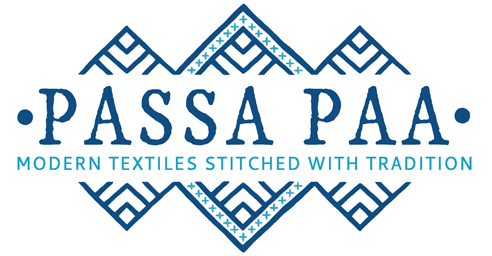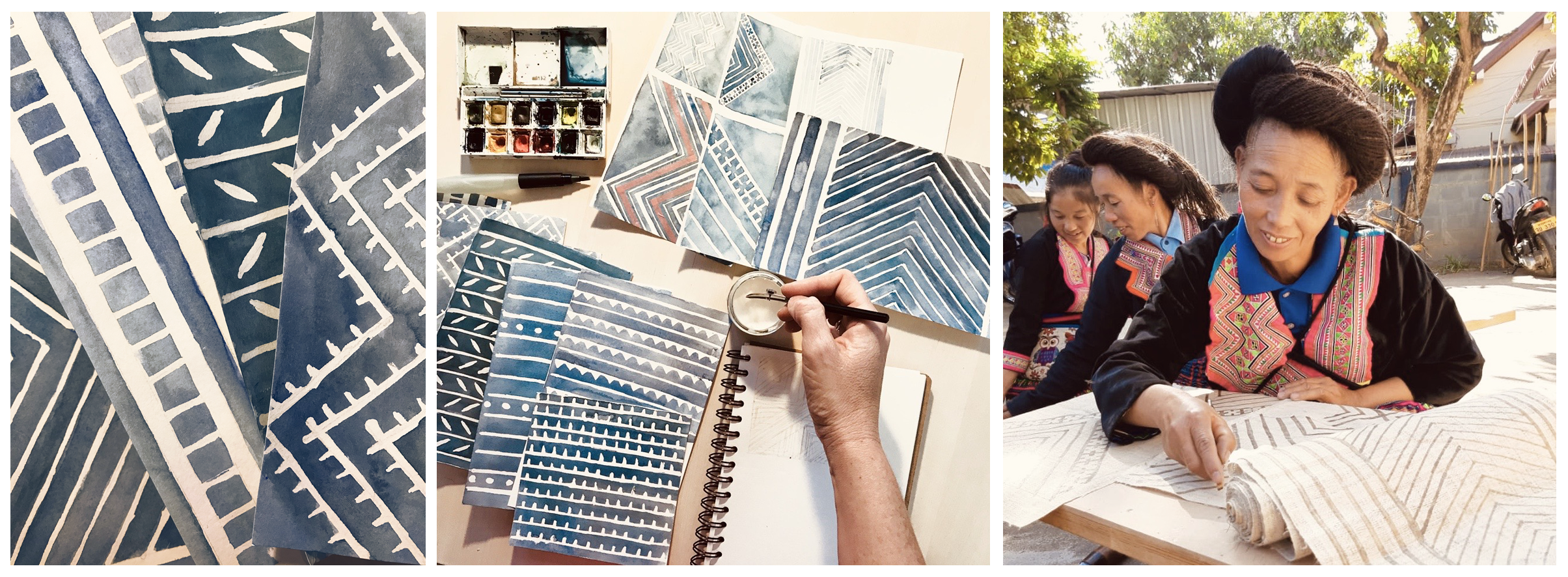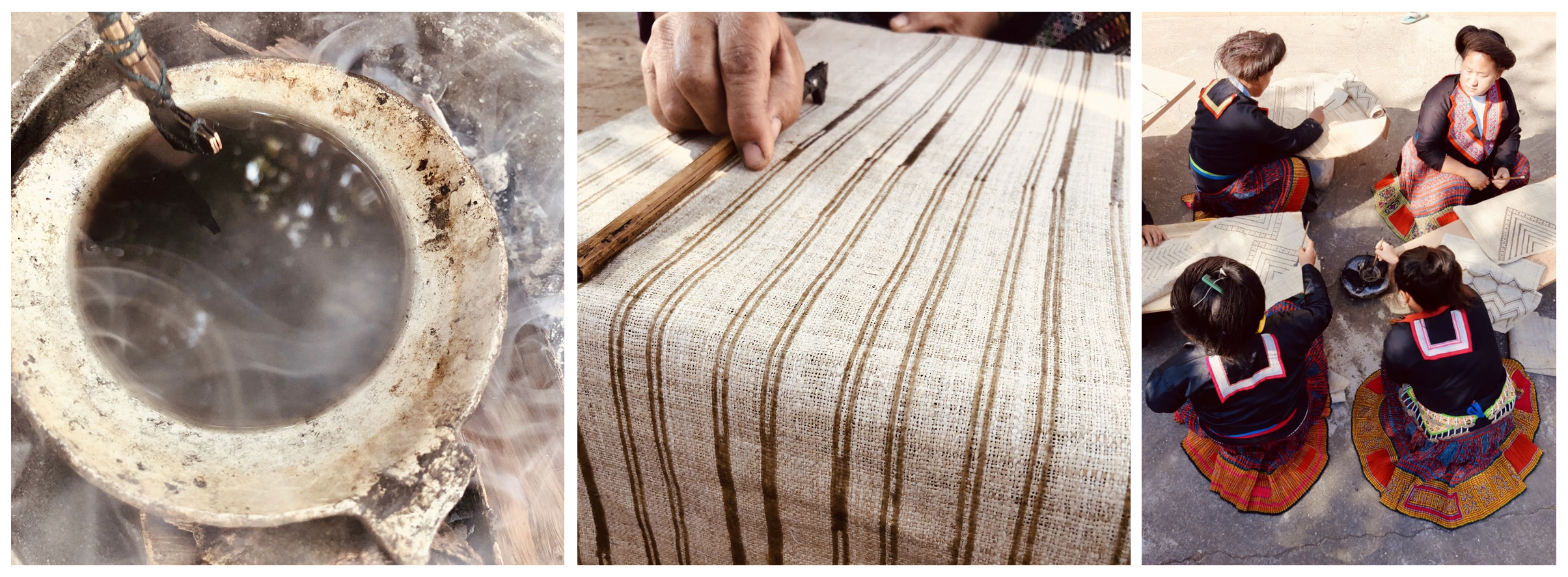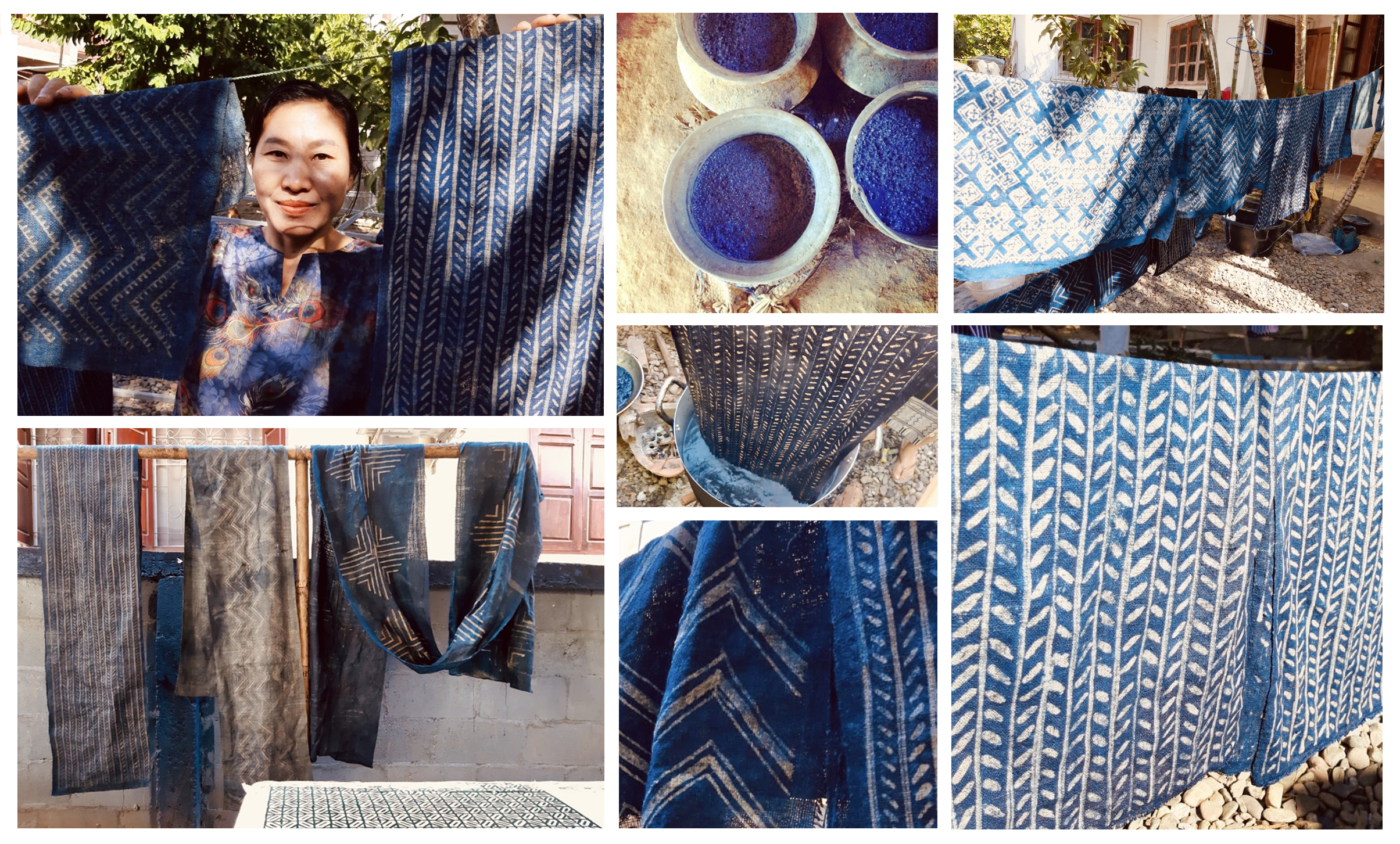A week of batik
From the drawing board in the U.K to the batik boards in Laos.
Hello everyone, it’s Heather here, reporting from the Passa Paa lockdown desk in the U.K. However, my heart and mind are very much in Laos, especially as it’s been a really special week for us in our Luang Prabang studio.
In August 2020 we received the joyful news that our proposed training programme for a group of Hmong artisans would be given the funding it needed and given the green light from the Handicraft Skills for Tourism Small Grants Facility, an initiative of the Skills for Tourism Project (LAO/029). This grant enables us to continue our dual mission of providing improved livelihoods to village based artisans, whilst creating a new collection of designs.
With all the upheaval that Covid has brought, this project is now more vital than ever, as artisan crafts need all our support and energy in order to remain a living, evolving and sustainable practice.
Throughout October and early November, I set aside some time to devote to the design work. The brief: to develop affordable textile designs that uses only traditional, local materials and methods for a contemporary homeware collection.
It’s been a long time desire of Pok’s and mine to incorporate more traditional Hmong textile crafts into the Passa Paa collection, so that we can reach out to more remote artisans and include them in our vision to keep Hmong textiles alive and thriving. So with the help of this funding, the training project would be ALL about hemp, wax batik and our beloved indigo dye!
1. My collection of vintage Hmong baby carriers providing the inspiration. 2. Our visiting artisans raring to go with their batik pens.
At the beginning of the year when we were planning this project, we envisioned that I’d be out in Laos and developing ideas face to face with Pok and our studio manager Got. That’s how we ‘usually’ do things, but we know this year has been far from ‘usual’ for us all. With me being stuck in the U.K we were forced to do things differently. Fortunately I have a couple of vintage Hmong textiles up on my wall that act as a constant source of inspiration and hundreds of photos of the vintage textiles that Pok and I have collected over the years which we look after in Laos. So the design process could begin from there. It was really important to design and draw as close that hand drawn batik look as possible. I sketched out ideas using I using rubber masking fluid, a ruling pen and blue ink as I realised this gave me that ‘batik’ feel I was looking for. I then transferred these into full scale designs on the computer so could Pok print them out and hey presto…. Let the training commence!
1. Hot melted wax on a glowing coals. 2. Drawing the pattern onto hemp with traditional bamboo / copper ‘pen’. 3. Hmong training participants.
Whilst I was working on the designs, Pok over in Luang Prabang had arranged for 15 Hmong women from Xam Tai in Huaphan province to come visit us for a week. They travelled for 2 days over land to reach us, so first they needed a well earned rest, some nourishing home cooked Hmong meals and a tour of the lay of the land. With Pok and her mum (who is very much a part of our team) in charge they were in safe and caring hands!
The artisans stayed with our studio for a week, exchanging one another’s crafts and swapping stories of life in the mountains with life here in our town of Luang Prabang. The artisans learnt about our processes of applying a print design to fabric when we have a specific product in mind and we got to understand better the intricacies of translating our contemporary designs using their traditional techniques. So much shared whilst sitting under the shade of the mango trees in the yard at the front of our studio. My kind of perfect, I wish I could have been a part of that!
And the result? We’re still in early days, but so far the textiles themselves look amazing, seeped in skills and provenance. The finished pieces still need to be ironed and turned into final products that we can then review. It’s a lengthy process, but one we know will be very much worth it. New friends have been formed, relationships that will grow and evolve like the craft itself. The artisans have now returned back to their village, raring to smooth out their hemp, fire up the coals and melt some wax, their batik pens are poised! So our work doesn’t stop here, in a few months we’ll be going to visit them in their village to see how they are getting on, we’re so excited - stay tuned!
Indigo dip dying the batik cloth.
With special thanks from all of us at Passa Paa, this activity is financed by the Handicraft Skills for Tourism Small Grants Facility, an initiative of the Skills for Tourism Project (LAO/029) which is financed by the Governments of Lao PDR, the Grand Duchy of Luxembourg and Switzerland, and implemented by the Ministry of Education and Sports of Lao PDR and LuxDev, the Luxembourg Development Cooperation Agency.





